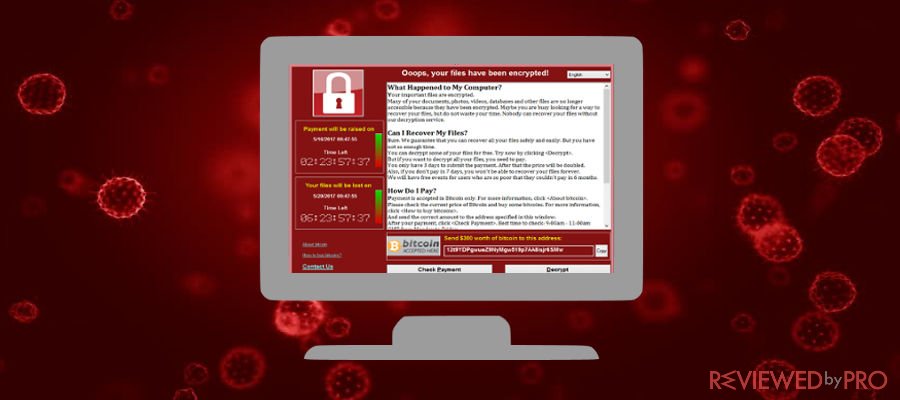Malware is something many people are constantly dreading about. From individual users to world-famous enterprises, everyone fears to lose their privacy, suffer from a monetary loss, have their sensitive information stolen, or have their computer ruined by an aggressive virus.

There are so many different types of malware that it can make your head hurt. Each type acts in its own malicious way, causing trouble to its victim.
For this reason, we present to you 9 ways of protecting your computer from hackers and their malicious attacks.
1. Update your operating system
One of the most important things you must do to protect your computer from viruses is updating your operating system as frequently as possible. Do not look at official update pop-ups as if they were some annoying ads – the updates often contain important patches in the system, which prevent some of the recent threats from entering your machine.
Additionally, don’t forget to update your software, and this includes programs like Skype. New versions are much less susceptible to hackers.
2. Download a reliable anti-malware tool
This is one of the most important steps you should take when it comes to cyber security. A computer without a good security tool will soon become a victim of hackers.
You should choose the antivirus program according to your personal needs and your device. There are both free and paid options, so there are a lot of choices to match your preferences.
3. Update your security tool and run scans regularly
However, downloading an anti-malware application is not enough – you must update it regularly. The best option would be allowing the program to update automatically so that it would always be prepared for zero-day threats.
Also, don’t forget to perform computer system scans regularly – this will ensure that there are no threats hiding in your PC. Usually, the application will have the option to perform system scans automatically, for example, each time you turn on your device.
4. Install a firewall
Firewall is another feature of high importance. It can either be a device (a.k.a. hardware) or a piece of software. It helps you stay safe while browsing by not allowing unrequested traffic reach your device.
Many anti-malware programs have the feature of firewall, for example, Avast. You can take this into consideration when choosing your security tool.
5. Don’t open suspicious emails
Spam emails are the main source of malicious ransomware. If you get an email that you did not expect, for example, an invoice or order shipping details, do not open it. More importantly, don’t touch the email attachment that comes with the letter.
Usually, such attachments, that are usually in PDF format, carry another attachment that is opened when the PDF is launched. If you enable editing for the newly opened DOC file, the ransomware will take full action and encrypt all the files on your computer.
Even though you might be curious to open an unknown attachment, remember that it can be highly malicious even if it is marked as safe.
6. Download only legitimate software
Many people are guilty of downloading pirated software and using P2P pages for file sharing, but it is a highly dangerous activity. The typical threats that come from Peer-2-Peer services are worms, Trojans, Potentially Unwanted Programs (PUPs), adware, etc.
Buying legitimate applications and media is not only safer – it is the legal way of supporting the creators.
7. Use cloud storage to backup your files
In case a dangerous virus or ransomware does sneak into your system, it is smart to have all your files stored externally using cloud services. In that case, you won’t suffer a lot if ransomware does encrypt your files.
It is advisable to also have your data stored on an external device – the more places you use to store your files, the better.
8. Do not click suspicious links
This should be clear without saying – do not visit suspicious websites. There are many pages that are especially filled with malicious ads and pop-ups that, once clicked, can damage your system significantly.
This includes adult entertainment pages and illegal streaming sites. Also, the pages where you can download pirated content like books, music, movies, etc.
Another Internet threat can be malicious links on safe pages. Even if you are currently visiting Facebook or Twitter, it doesn’t mean that you are protected. Often, hackers launch viruses that spread via messages and infect your machine if clicked.
Let’s not forget the fake software update buttons (especially for Flash Player) that can show up on less secure pages. To avoid such threats, download updates only from official sources.
9. Use different passwords for your accounts
One of the biggest mistakes you can make is using the same username and password for all your accounts. You see, if an account from a less protected page gets hacked and your credentials leak, they can be used to compromise your other, more important accounts.
The passwords should be quite long and complicated so that they would be more difficult to hack. Ideally, they should contain numbers and symbols. Be especially careful about your bank accounts.
If you follow these tips, you should avoid malware and keep your device safe. If you want to choose the most suitable security tool for your computer, you can read our article on the best anti-malware applications.




